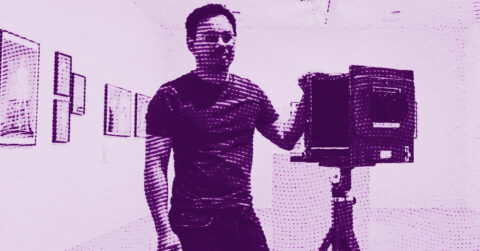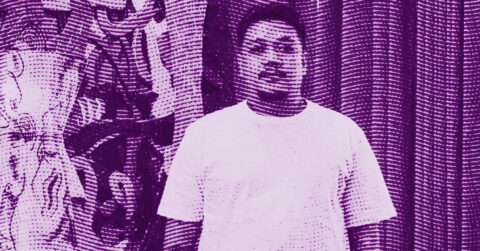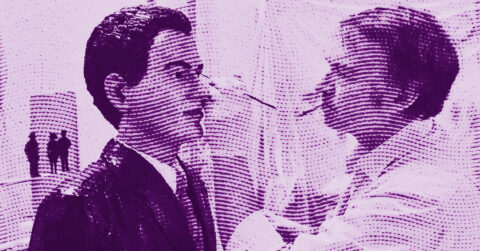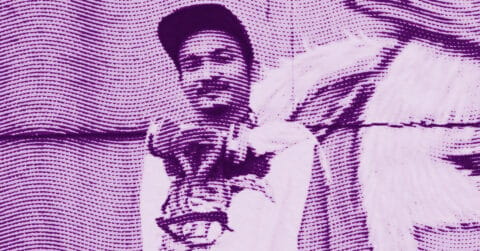Listen to me carefully, you bunch of snobs. Elizabeth Peyton (born in 1965) embodies everything I love and hate about contemporary art, and that is precisely why she deserves our attention. This American artist, with her portraits that are both precious and nonchalant, offers us a vision of the world that is as fascinating as it is annoying, as brilliant as it is superficial.
Let’s start with what immediately catches the eye: her painting technique. Those fluid brush strokes, those glass-smooth surfaces, achieved by successive layers of gesso meticulously sanded to achieve an almost mirror finish, create an instantly recognizable visual signature. It’s as if Peyton found a way to paint with liquid honey, giving her subjects an ethereal aura that oscillates between melancholy and glamour. But make no mistake: this apparent technical simplicity hides a sophisticated mastery of the medium.
What particularly strikes me is her way of treating the gaze in her portraits. Her subjects, whether Kurt Cobain, Frida Kahlo or a close friend, systematically avert their eyes from the viewer. This deliberate distancing evokes the Heideggerian concept of “withdrawal” (Entzug), where the very essence of being paradoxically reveals itself in its act of withdrawing. It is precisely in this game of absence-presence that Peyton excels, transforming her portraits into visual meditations on the fleeting nature of contemporary identity.
Let’s take her obsession with youth and beauty. Her subjects are frozen in a state of perpetual grace, like butterflies pinned in a display case. This fixation might seem superficial, and it probably is in part, but it also reveals a deep anxiety about temporality. Walter Benjamin spoke of aura as “the appearance of a distant thing, no matter how close what evokes it may be. With the trace, we seize the thing; with the aura, it seizes us“. Peyton’s portraits perfectly embody this tension: they capture the precise moment when youth begins to fade, when fame begins to wane, when beauty begins to dissipate.
Her choice of subjects, rock stars, artists, close friends, constitutes a personal pantheon reflecting the tastes of a certain New York cultural elite from the 90s. This is both her strength and her limitation. Peyton creates what Roland Barthes called a contemporary “mythology,” turning popular figures into timeless icons. But unlike Andy Warhol, who used mechanical repetition to drain his subjects of their substance, Peyton imbues hers with a disturbing intimacy, almost voyeuristic.
Peyton’s color palette, those deep blues, delicate pinks, emerald greens, creates an atmosphere reminiscent of the Italian primitives, while remaining resolutely contemporary. It’s as if she painted under the influence of an Instagram filter before it even existed. This approach to color is reminiscent of Goethe’s theories on chromatic perception: each hue becomes a vehicle for pure emotion.
Her treatment of pictorial space is just as fascinating. The often abstract or barely sketched backgrounds create tension with the meticulous rendering of the faces. This spatial dichotomy evokes the Deleuzian concept of the “plane of immanence,” where figure and background merge into the same pictorial reality. Peyton’s portraits are less representations than manifestations of a certain way of being in the world.
What strikes me most is her ability to transform banal photographs into paintings that transcend their source. Knowing that mechanical reproduction can diminish the aura of a work of art, Peyton reverses this process: she takes multiplied media images and restores to them a unique aura through her pictorial sensitivity.
But let’s be frank: there is something deeply irritating about her work. This endless fascination with youthful beauty, this romanticization of pop culture, this obsession with a certain form of cultural elitism, all of this could easily tip into preciousness. And yet, it is precisely this tension between superficiality and depth that makes her work so relevant for our time.
Her practice raises questions about the nature of contemporary portraiture. In the age of selfies and digital filters, what does it mean to paint a face? Peyton shows us that the portrait can still be an act of revelation, even, or perhaps especially, when it plays with the codes of popular culture and media representation.
Peyton transforms banality into transcendence. Her portraits are less representations of people than manifestations of a certain zeitgeist, capturing the spirit of an era in which celebrity, intimacy, and identity intertwine inextricably. Her work is both a mirror of our collective fascination with youth and beauty and a subtle meditation on the ephemeral nature of these ideals.
And to all those who think contemporary art must necessarily be conceptual or politically engaged, I say: look again. In a world saturated with images, true radicalism may lie in the ability to transform the familiar into something strangely beautiful and unsettling. Elizabeth Peyton achieves this with disarming grace, even if it sometimes annoys us. And it is precisely for this reason that she deserves our critical attention.
















